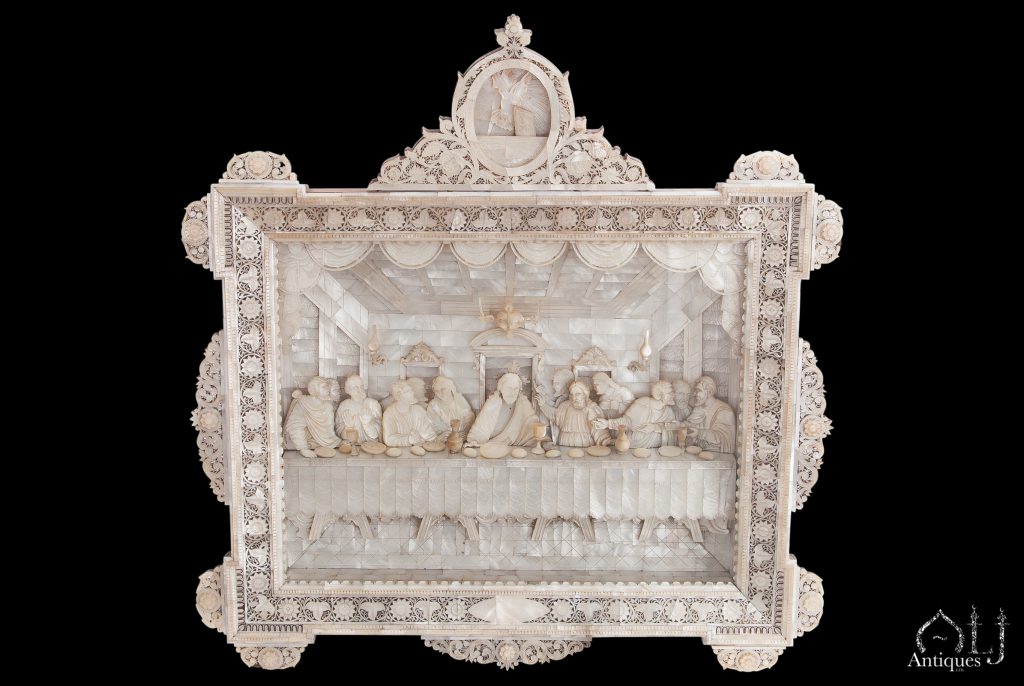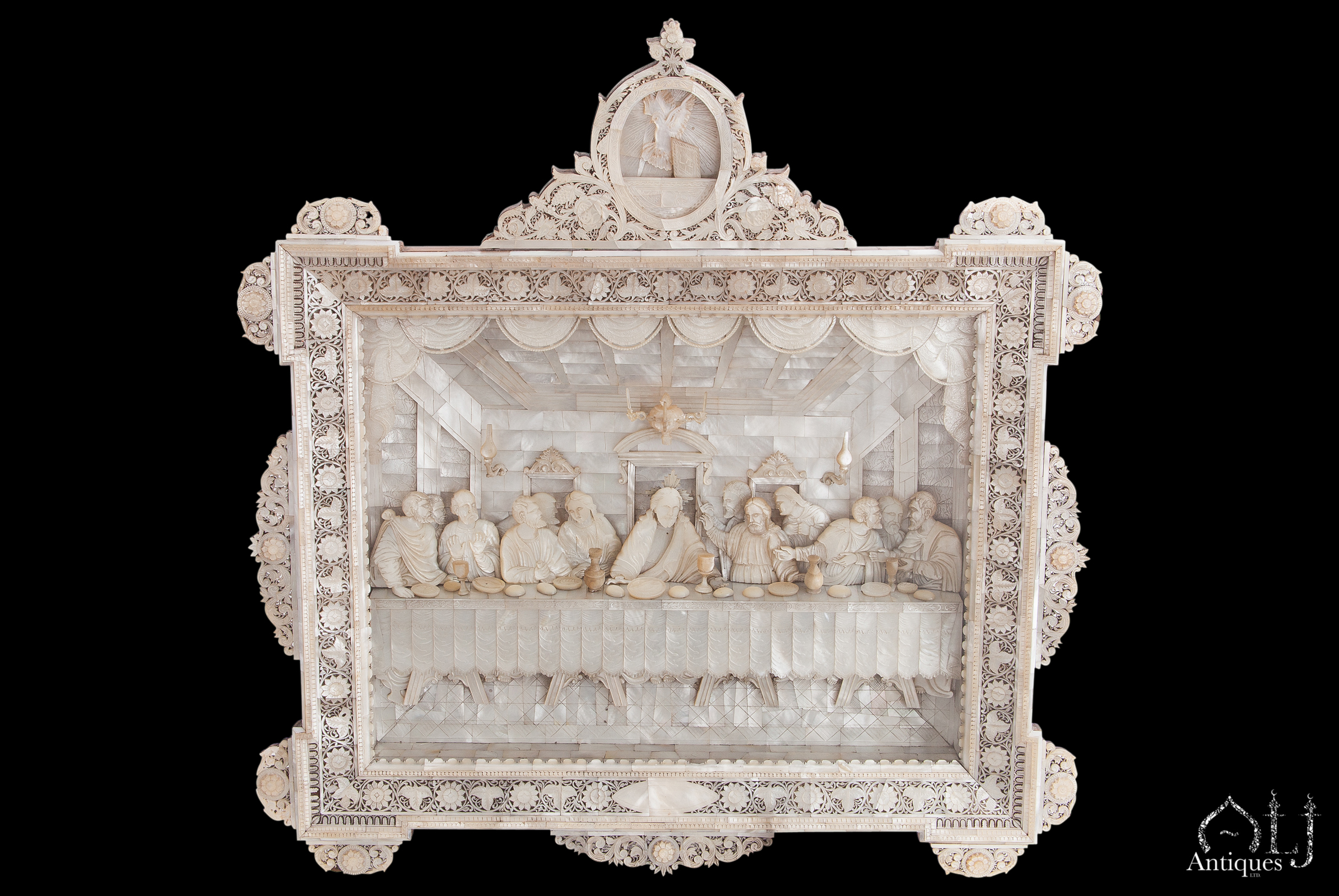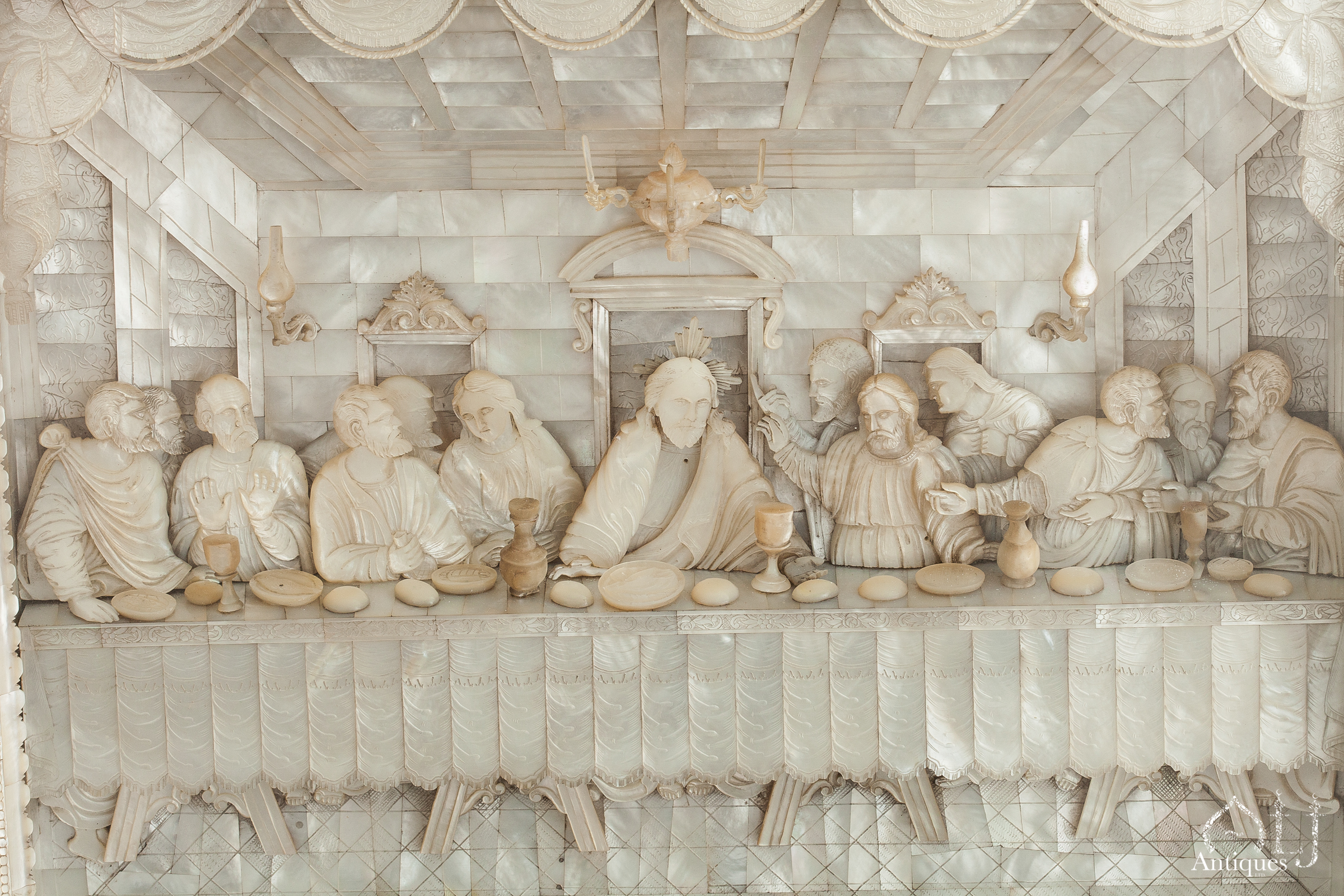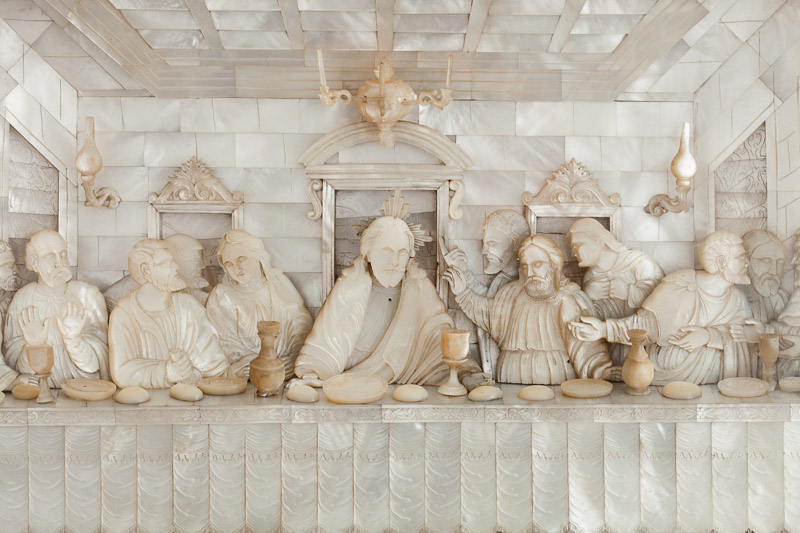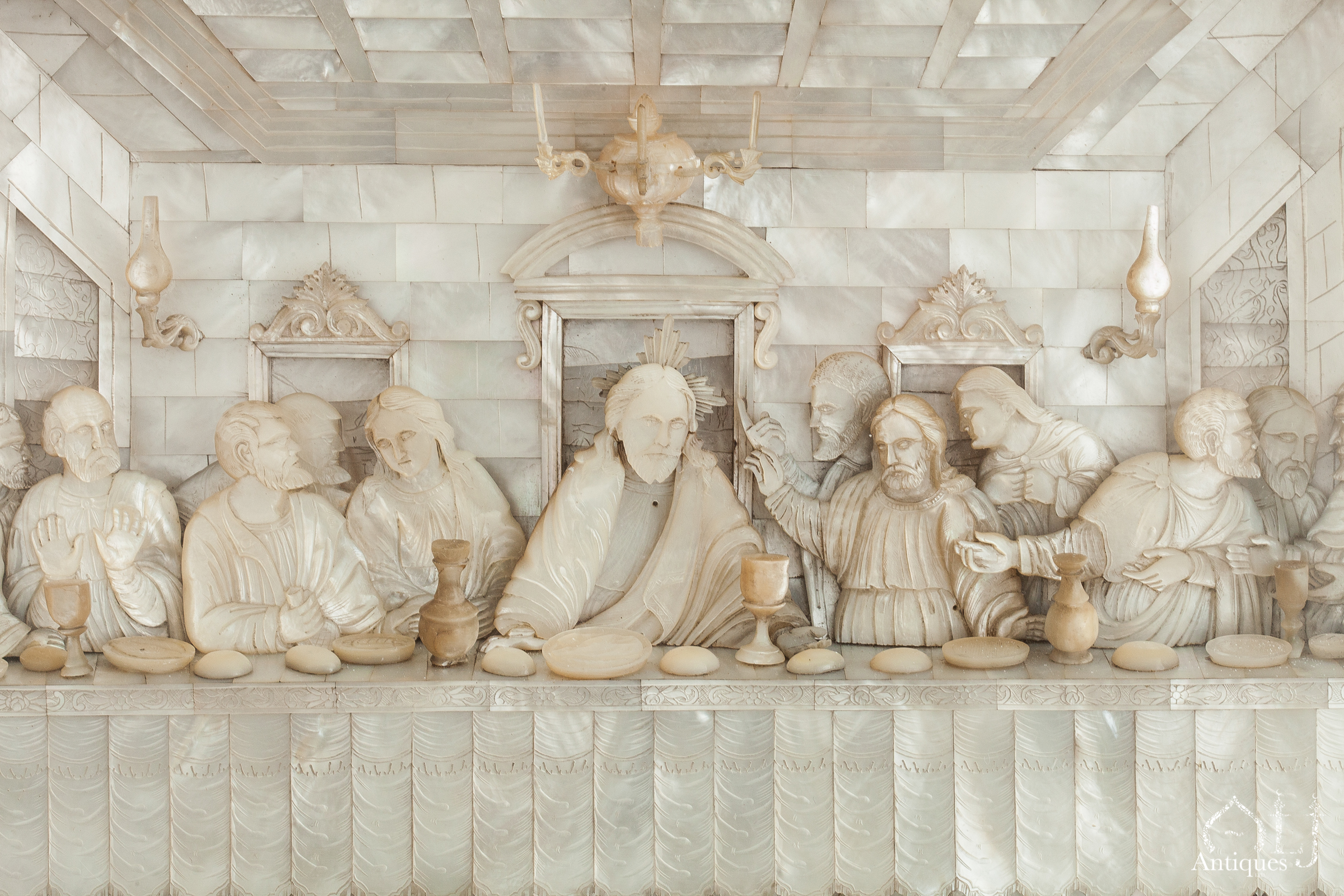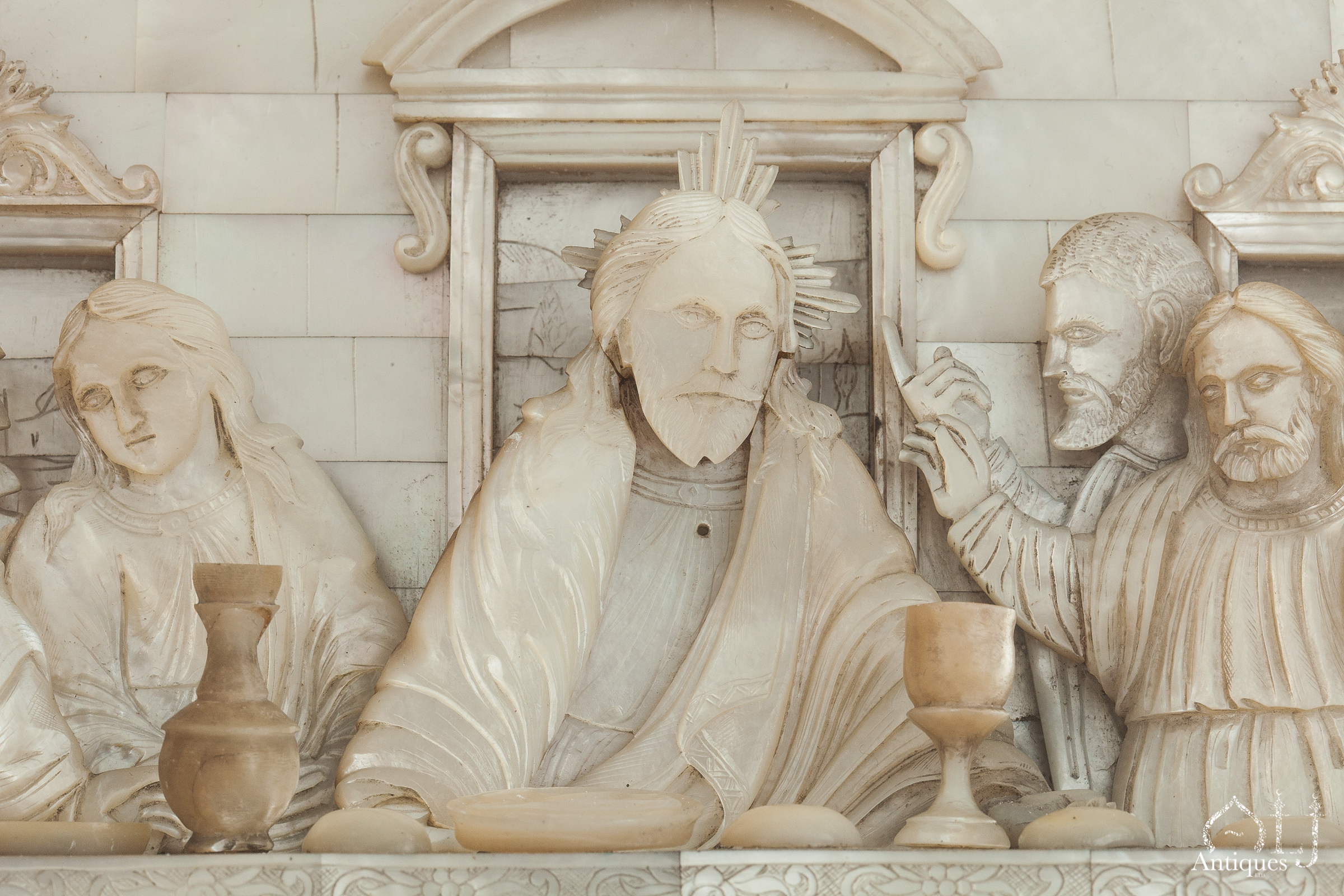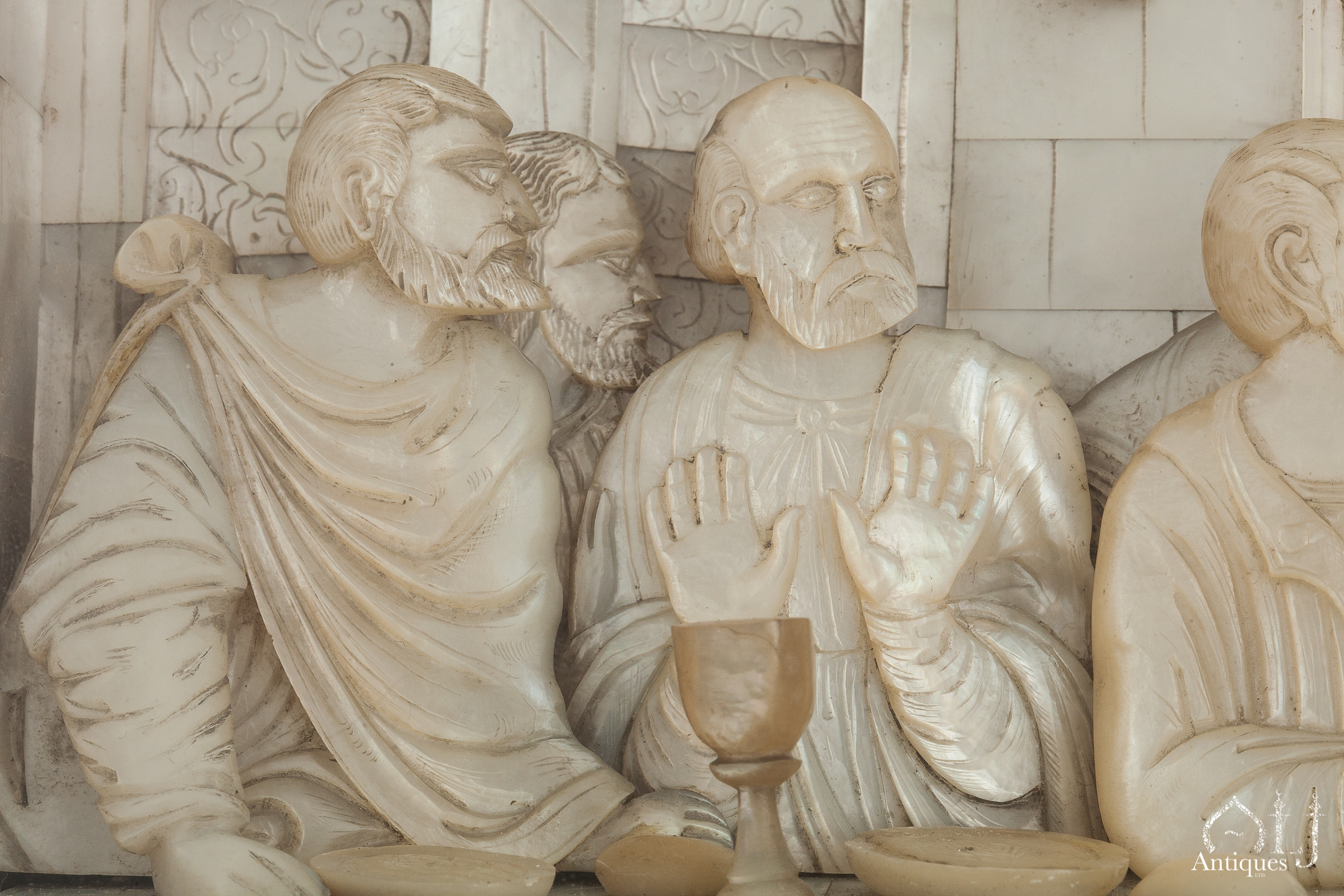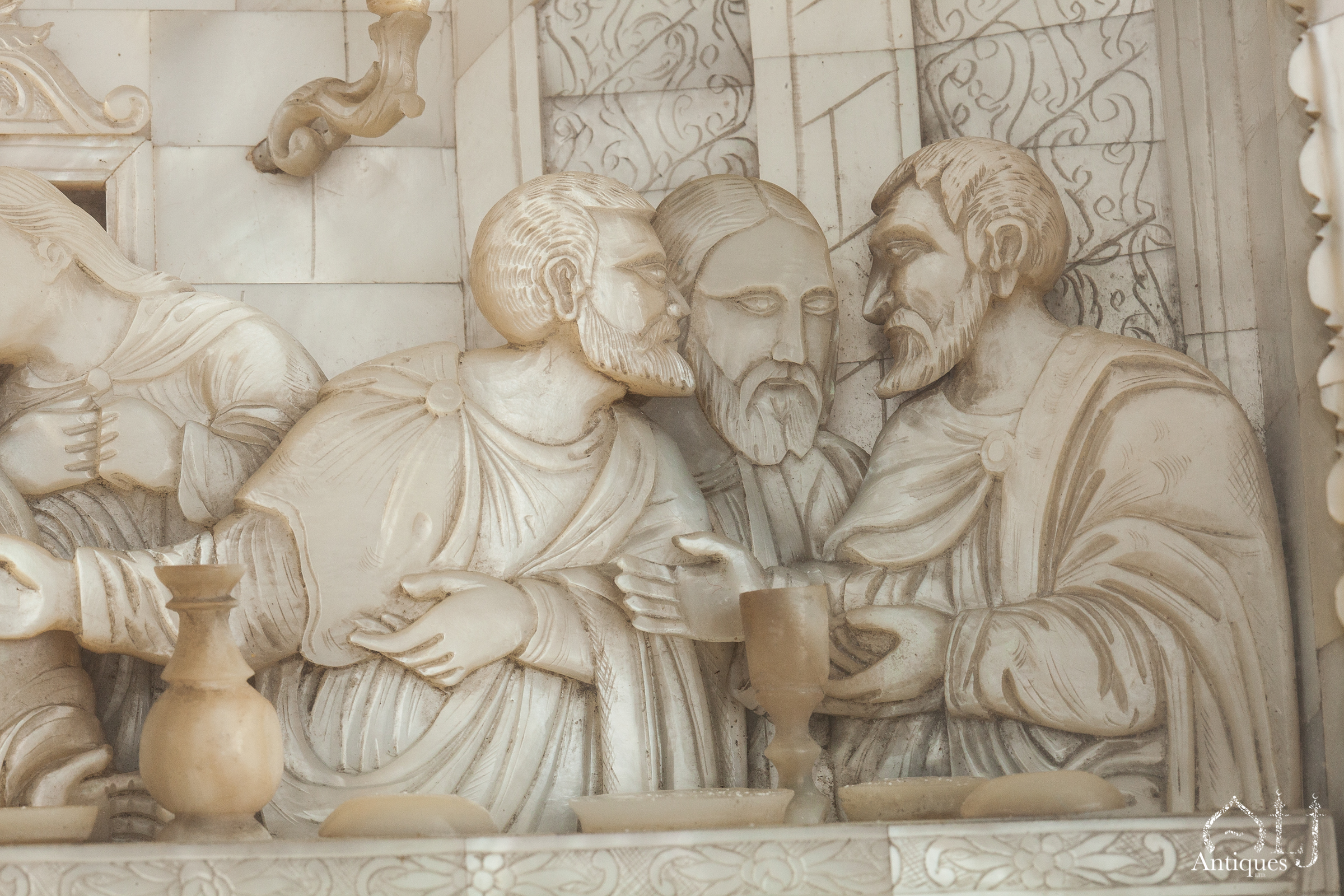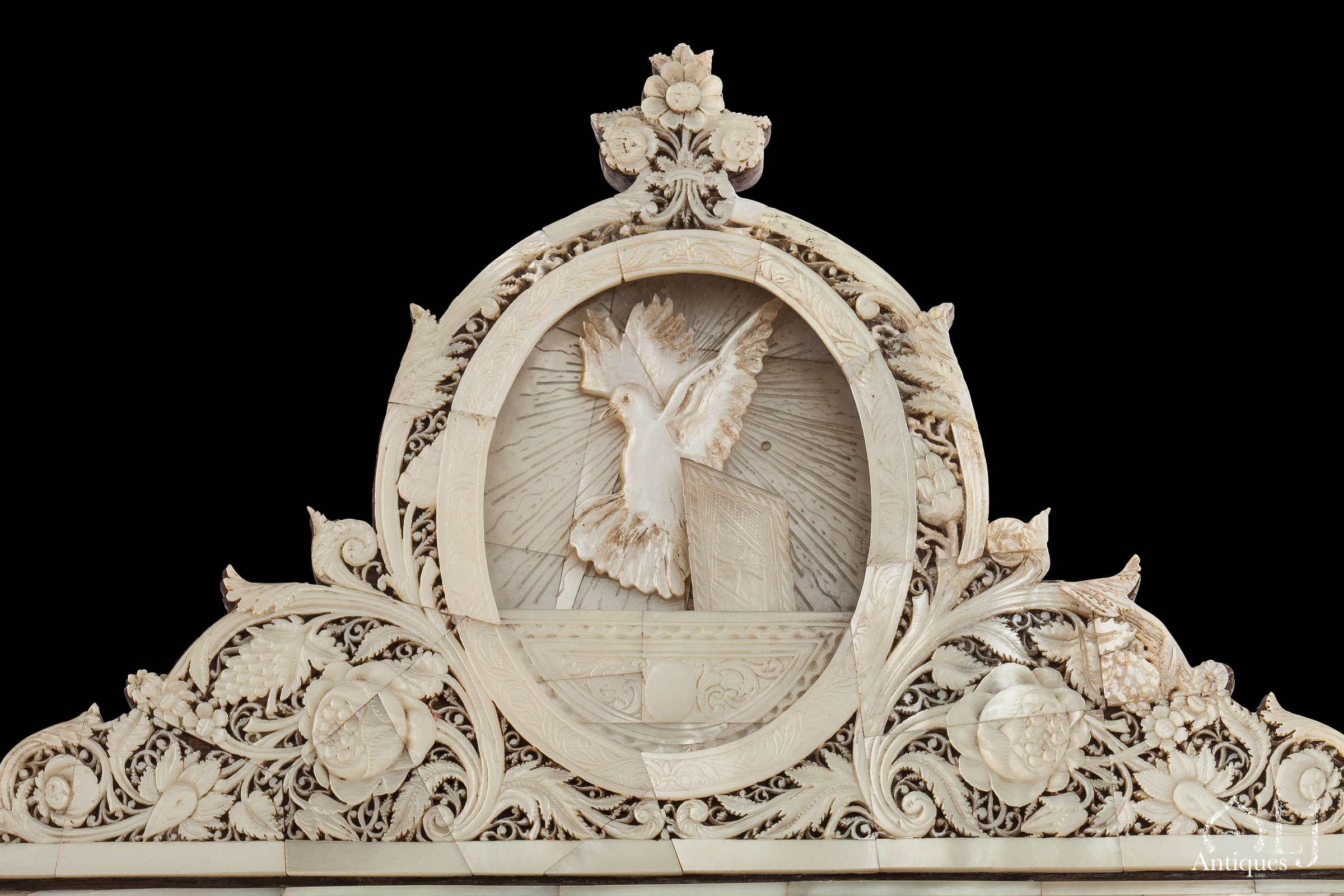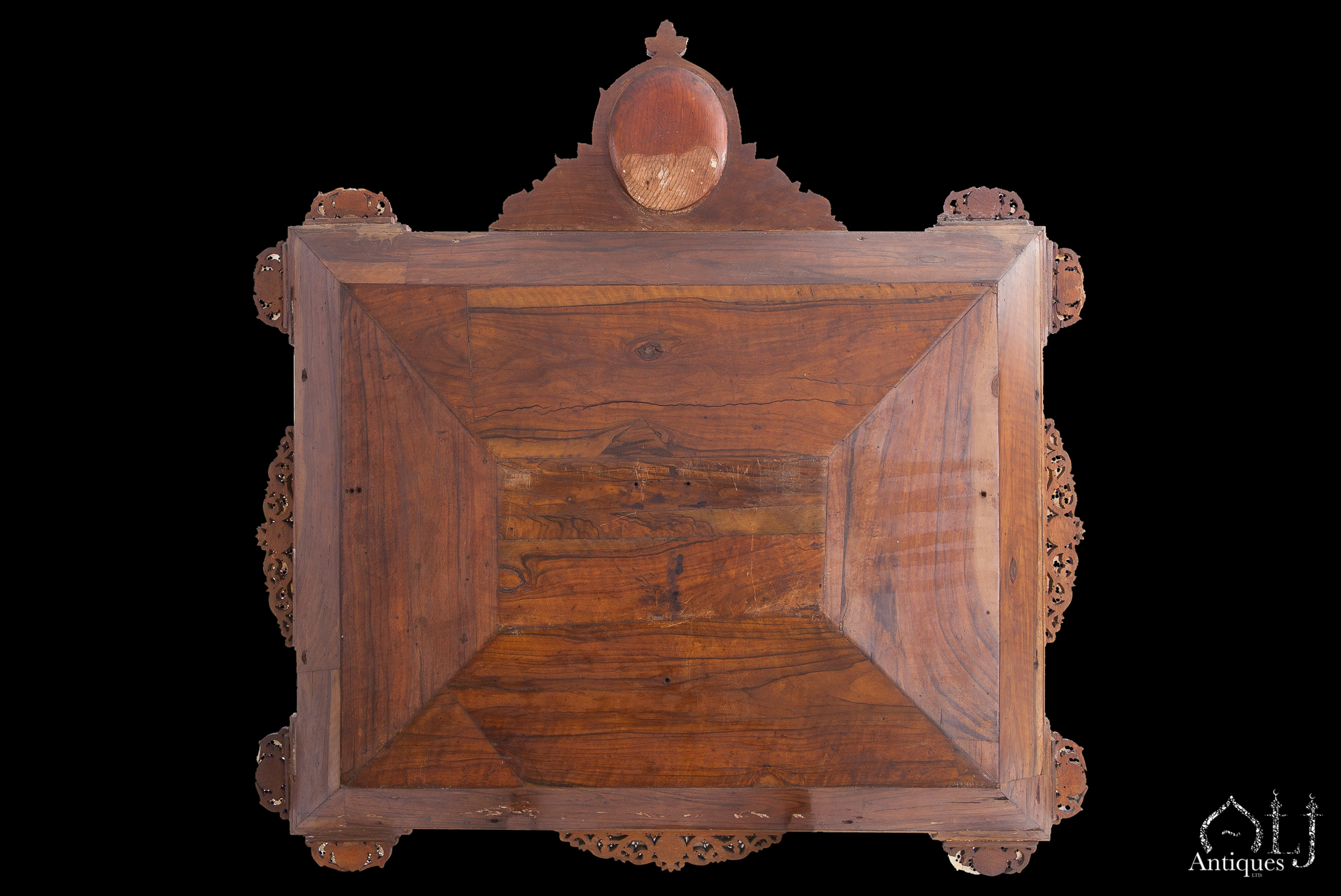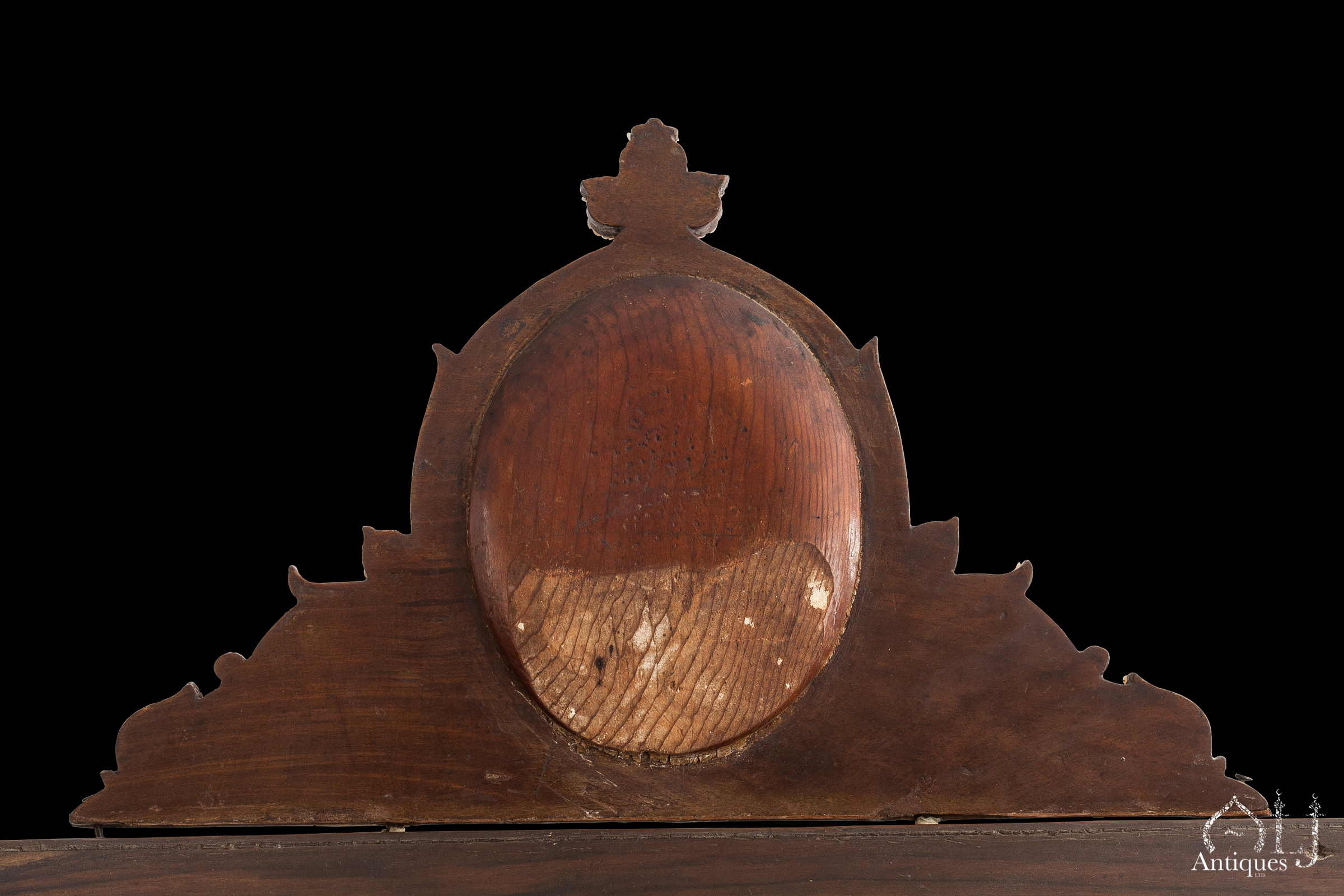Description
Pilgrims and Visitors of the main three faiths of the world (Jewish, Christian and Muslim) who visited the holy lands often brought back home some souvenirs and gifts to loved ones that represented the holy lands.
Some of these objects were made in Jerusalem, Bethlehem and some other places and sold to Locals, Pilgrims and Visitors from all over the world that can be found on the temple square and the streets of Jerusalem and Bethlehem particularly during major Christian religious occasions and church holidays such as Easter etc. When Jerusalem was filled with thousands of pilgrims, in 1912 alone some thirty thousand Russian pilgrims had registered with both the Russian Spiritual Mission in Jerusalem and the Imperial Palestinian Society.
For that reason there was a huge demand on traditional objects and souvenirs that represents the Holy Lands, the majority of those objects were made out of Mother of Pearl, Olive Wood Carvings and Furniture, other popular objects were like Metal Work such as Crosses and Ethnic Jewelry, Dead Sea Stone Carvings, Palestinian fine embroiders, Candles making, Lithographs and Engravings, Staged Photographs, Holy Land Photo Albums associated with fine Dried and Pressed Flowers Arrangements, and at a later date Armenian made Jerusalem Pottery.
The attraction of the Mother of Pearl lies in its smooth, durable and relatively easy to work with, translucent effect, the nice contrasts with darker furniture and different shiny colours that reflect the lights.
The Art of carving and engraving mother of pearl has a long history and been used in the near east and other parts of the world, for it has been used for inlay and the decoration of furniture, architectural details and Jewellery.
Also some historical documents and surviving artifacts reveal that the main centres for the production of Mother of Pearl were Bethlehem and Jerusalem, Olivewood carvings were generally executed in Jerusalem.
Mother of pearl as a raw material was brought from The Red Sea, as its rich marine life, has always provided a rich source of shells and mother of pearl. In fact until today, one major source of shells for the mother of pearl industry in Bethlehem is the Red Sea coast of Sinai.
And on later periods to meet the mounting high demand, Mother of Pearl and shells were imported as far as the South China Sea, South East Asia, Australia, New Zealand, Mexico and Brazil. .
The entire shells or mother of pearl production process is based on: artistically outlining or designing, cutting and polishing into pieces of exact dimensions and shapes in order to form mosaic images, the pieces were affixed together on olive wood panels or boards, for supporting purposes by using natural adhesive materials to eventually become a diorama or a model.
Other techniques were also used that involves the carving and engraving of a complete polished shell to achieve an icon that is made out of one shell.
Different sizes of shells were carved and engraved as religious Christian Icons, and were made by masters achieving high artistic craftsmanship that reflects the long standing tradition of Christian art which constantly developed from the fourth century. The value of these shells differs, fine and large carved shells were usually scarce and more expensive.
Generally dioramas and icons were inscribed and bear the place where they were made, either Jerusalem or Bethlehem.
The majority of carved shells were depicting gospel subjects such as the Nativity of Christ, the last supper and the Ascension.
Large and smaller dioramas were occasionally inscribed at the front with Latin alphabet or other languages such as Greek, English, Italian, French, Armenian etc., defining the subject of the icon or diorama, the place where it was made, the year and the maker’s name and occasionally to whom it was made or gifted.
On some occasions some Arabic inscription can be found on the back of the mother of pearl shell or wooden plates, also defining the place, year and the maker name, this inscription support the claim that mother of pearl icons were usually made by Arabic Masters.
Historically and traditionally and since the 12th.century, the industry of mother of pearl was carried out in local workshops mostly at the Bethlehem area. Dedicated Palestinians mastered this art and passed it on from one generation to the next. During the golden age of the industry that was in the middle of the 19th century, until the first quarter of the twentieth century and due to the relative stability and increasing good relations with the western world, when mother of pearl carvings of this area had become very popular and sought after, for it started competing with other Christian ivory carvings, and was also used as wonderful bright alternative to ivory, for some how the talent of mother of pearl carving and engraving had matched if not surpassed them, pieces were not only considered as souvenirs from the Holy Lands anymore but also as masterpieces.
Bethlehem has witnessed major development in the industry of mother of pearl, encouraged by the presence of pilgrims, religious individuals, the influence of missionaries and also The role of craftsmen arriving from Genoa and Damascus was well recognized historically.
The legacy of the mother of pearl craft in the Bethlehem area has maintained the artistic vision and tradition of the Palestinian community and provided some economic stability and independence.
High quality works of art were given as presents to high-ranking Foreign and Royal Christian pilgrims as they once stood in the chapels of the Holy Sepulcher at Jerusalem and the church of the Nativity at Bethlehem. Some historical documents at the hermitage Museum provide important information on who presented those high quality objects, this suggests that they were donated by patriarchs, high clergymen or aristocrats.
The higher caliber craftsmen focused on large pieces mostly decorated with Christian themes.
The other development was the exceptional work of large Dioramas or models. These were usually done on Demand by Governments and were given as Gifts to Royalty, Rulers and High-Ranking Religious Individuals.
Some exquisite Mother-of-pearl works of art that was made by Palestinians in the Holy Land during the past three centuries such as Dioramas, Crucifixes, Boxes, Shell Icons, Rosaries, and cabinets can be found today at the vaults of the Vatican, the British Museum in London, the Hermitage Museum in Saint Petersburg, , Il Museo Della Grazie in Rimini, and Topkapi Palace Museum in Istanbul, in addition to other pieces in Churches, Cathedrals, Religious Missions, and Private Collections
The main well known artists in the field: Elias S. Dabdoub, Suleiman Dabdoub, whose work of the Dome of the Rock exists in the Top Kapi museum in Istanbul, Suleiman Roc (1831-1906), Hanna S. Roc (1863-1941), Yousef Jidi (1864-1934), Mikhael Lama, Butros Lama, Hanna Tabash, Elias Giacaman, Jamil Musallam, Saleh Abu Ayash, and others from the Salameh, Freij, Izmeri, Handal, Hazboun, Ballut, Shehadeh and Asfura families. The Zougbi family was well known for its skill in working on large models. Issa Mikhael Zougbi was a senior member of the community in Bethlehem; his sons, mainly Bishara (1863-1934) and Yousef (1878-1964) were the main artists in this field of mother of pearl Their workshops of mother of pearl and olive-wood carving was officially established in 1876, the Zougbi workshop was maintained by his son Gregory (1908-1994), One of his other sons moved to Barranquilla Colombia, Latin America, and had established a mother of pearl workshop and its been running now under the family descendent Mr Enrique Jidi The workshop of Gregory Zougbi was officially closed down in the early 1970s.
Our current outstanding Diorama or Model of the Last Supper depicting Jesus with his original twelve Disciples is based on Leonardo’s da Vinci’s painting in Milan, Italy.
The decoration is exceptionally fine and exquisite, the carving of the mother of pearl is carefully, patiently and passionately executed to achieve the three dimensions effect. The fine details to all cotenant of the scene including the Room’s Walls, Ceiling, Furniture, Chandelier, Textiles including the Clothings, Table Sheet and the Curtains, the Dove that represents the Holly Sprit and also the superb frame Borderline carvings and the complex open work technique that had been executed on the mother of pearl, makes it evident as a suburb example that shows the level of excellence that these masters had reached on producing exceptionally high quality carvings on mother of pearl material, for the figures that represent Jesus Christ and the Original twelve Disciples is clearly noticeable through out their facial expressions and one can clearly see their emotions and feelings also through their body language, positions and their physical gestures, all that was done to achieve high impact on viewers.
The lace effect carvings to the frame borders of our current lot is almost identical to the Diaorama that was awarded to the Hermitage Museum in 1991 by the Russian Customs, that bears Greek inscription and was originally brought to Russia in 1910 and was gifted from the Patriarch Damiaanos of Jerusalem at the time, to the son of the Russian Emperor Tsarevich Alexis,
For a similar example please see, El Arte Palestino De Tallar El Nacar, by Enrique Jidi Daccarett, Karen David Dacccarett & Martha Lizcano Angarita (The Palestinian Art of Mother-of-Pearl Carving)
Lot 36 & 69 Pages 52 & 71
For another almost identical Diorama please see From Jerusalem with love, art Photos and souveniers, 1799-1948, Highlights from the Willy Lindwer Collection, uitgeverij wanders,Bijbels Museum, Amsterdam 2010,
Lot 202 page169
For another example please see Pilgrim Treasures (Byzantium Jerusalem) from The Hermitage, Hermitage-Amsterdam Exhibition, lot No. 166 pages, 18-19 & 118
Condition: excellent, minor loses to mother of pearl

